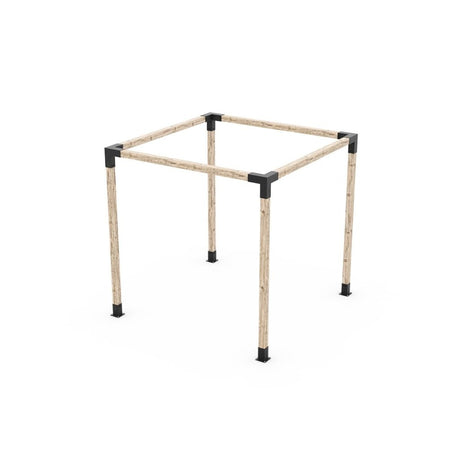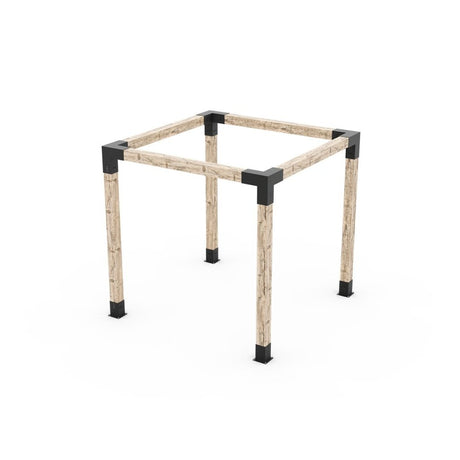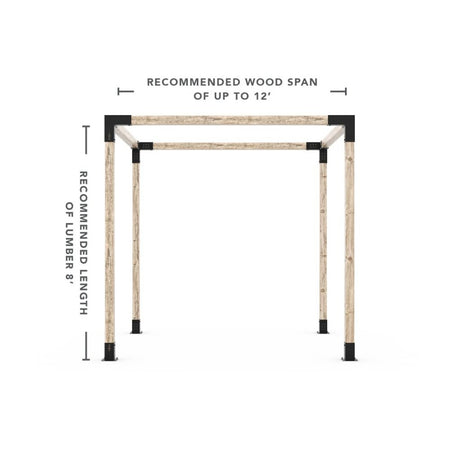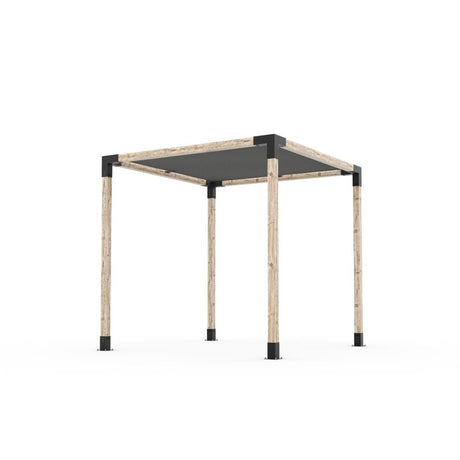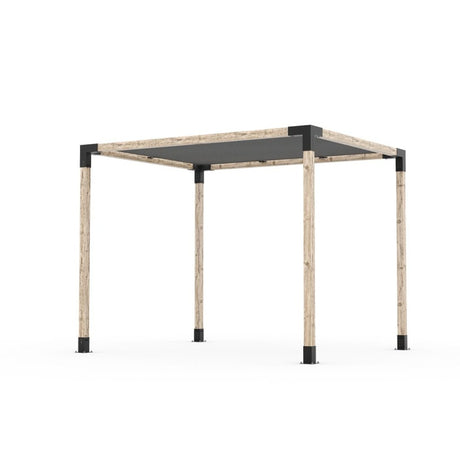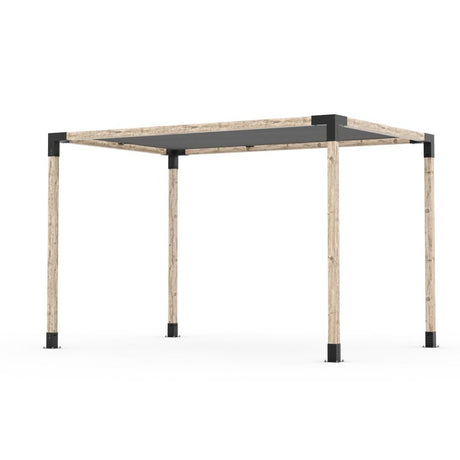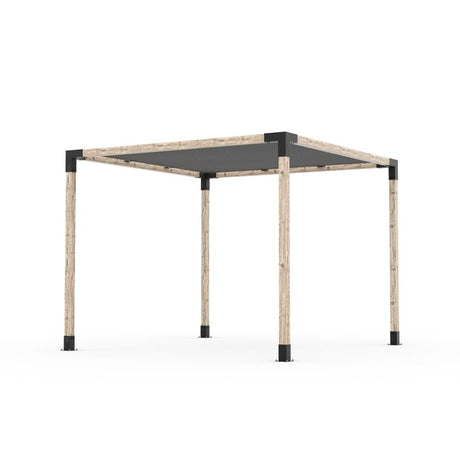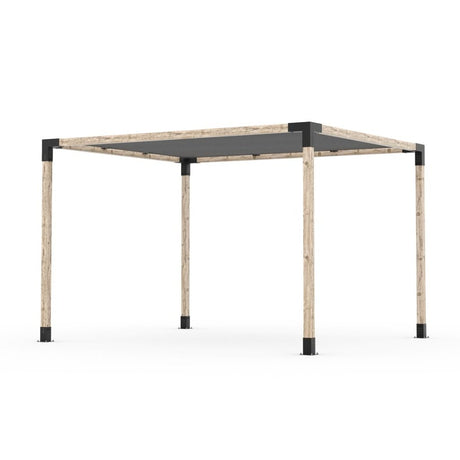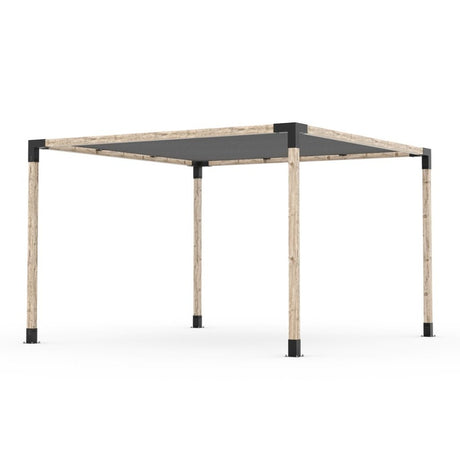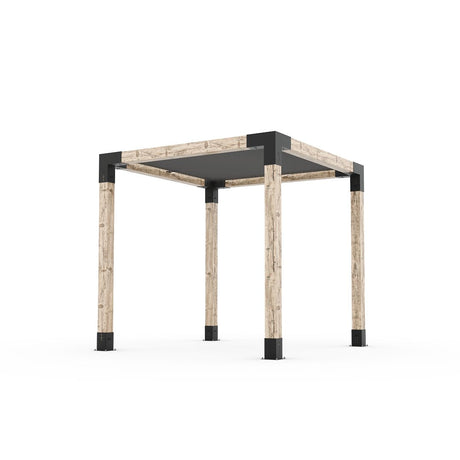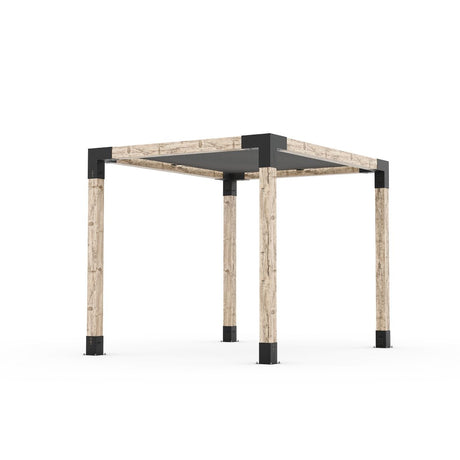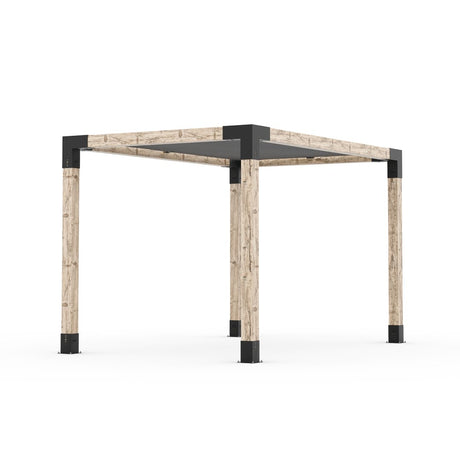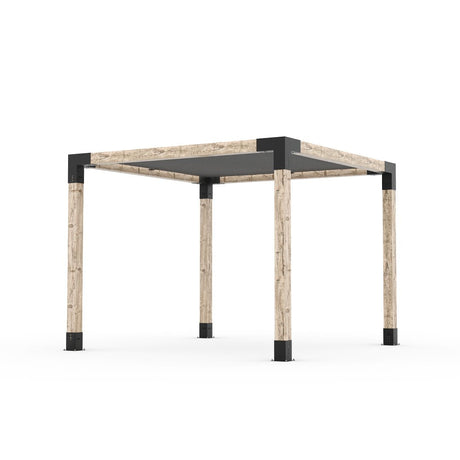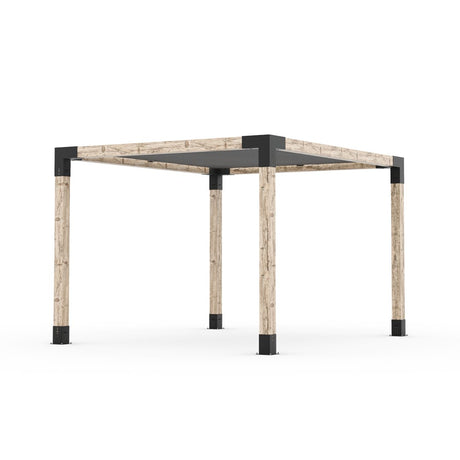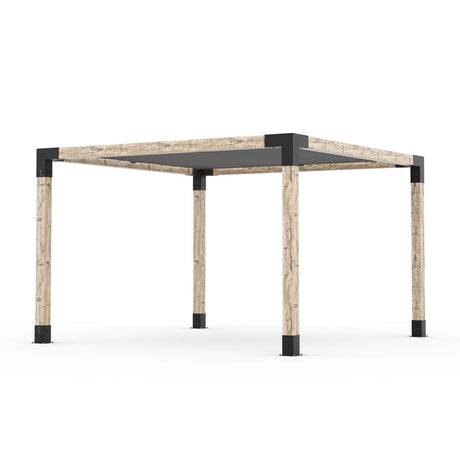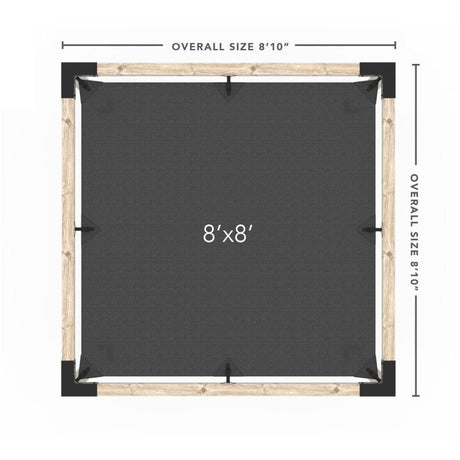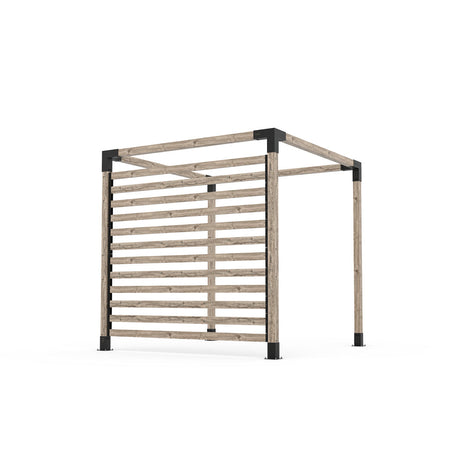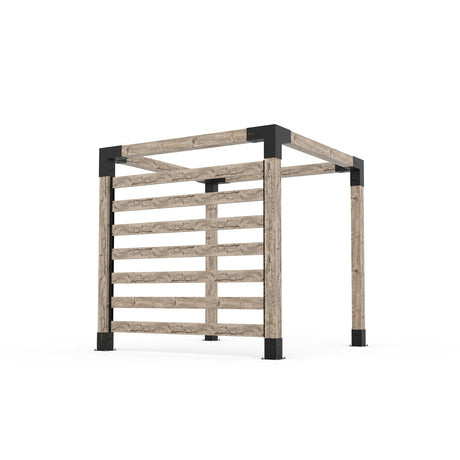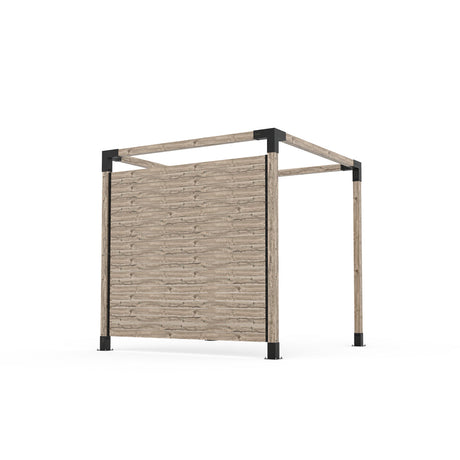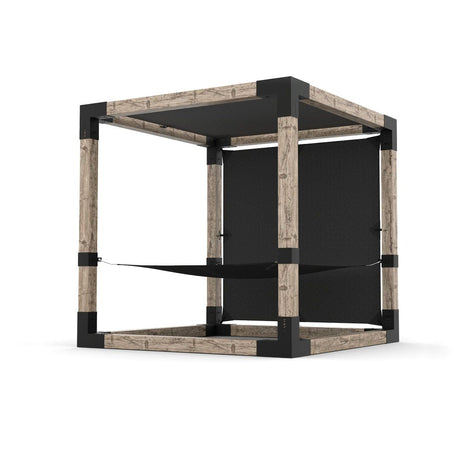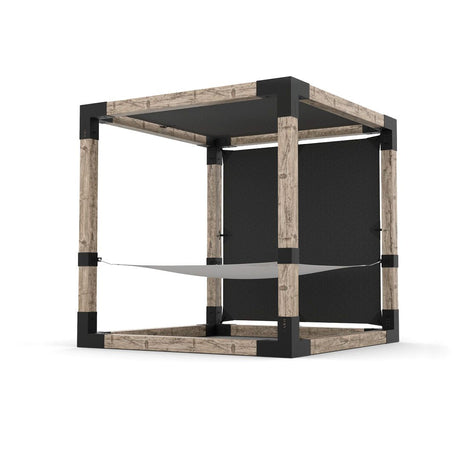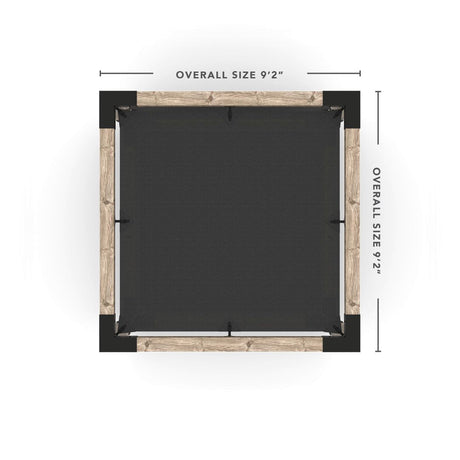A small patio has the potential to feel expansive, comfortable, and visually refined when designed with intention. Space limitations don’t need to restrict your creativity—they simply ask for smarter choices in layout, materials, and furniture. The right combination of design details can turn even the narrowest outdoor nook into a welcoming and functional extension of your home.
Design ideas that work for any small patio
Cozy living areas outside deserve the same design attention as interior spaces. Limited square footage can still be visually appealing and surprisingly functional. Outdoor seating, strategic greenery, and clever accessories often make all the difference. Inspiration stems from thoughtful layouts that balance proportion, comfort, and style, which are vital for successful small patio design ideas.
One approach involves mixing compact furnishings with weather-resistant fabrics and minimal hardware. Consider modular solutions that arrive with user-friendly brackets and connectors, reducing the need for special tools. Smaller outdoor areas often benefit from a system that builds upon standard lumber, making it simple to customize the layout and coverage. This method helps turn overlooked square footage into a stylish extension of any home, reflecting the best design ideas for small backyard patios.
1. Add a vertical garden for privacy and greenery
Begin with vertical plantings that elevate a small outdoor area. A tall framework featuring climbing vines or hanging pockets brings lush beauty without sacrificing precious floor space. Freestanding panels crafted from weather-proof materials help define boundaries where neighbors are close by. Greenery at eye level can also produce a cozy atmosphere, turning tight corners into a peaceful retreat.
This approach can reduce outside distractions while introducing subtle movement and fresh fragrances. Layers of foliage also improve air circulation, which is helpful on warmer days. Blending blooming plants with trailing varieties yields a visually textured arrangement that draws the eye upward. Strategic use of green walls enhances small patio design ideas by adding a welcoming focal point.
2. Use modular furniture to flex with your space
Selecting pieces that can adapt to flexible layouts simplifies planning for limited footprints. Sectional seating with removable segments allows quick rearrangement based on the occasion. Lightweight frames constructed from rust-resistant aluminum or steel add durability without making a patio feel cramped. Cushion fabrics should be easy to clean, maintaining a fresh look.
This style of furniture can serve larger groups during family gatherings or compress into a compact footprint when needed. Surfaces that double as footrests or extra seating optimize comfort without introducing clutter. Cleverly designed frames often include hidden hardware, making assembly straightforward. Modular setups bring lasting value while matching small patio design ideas that focus on practicality.
3. Include a pergola to frame your seating area
A sturdy pergola defines the border of an outdoor lounge. Timber beams or metal brackets can create the overhead structure using standard-sized lumber. Soft drapes or climbing plants add a comforting element for relaxation. This method delivers partial shade while leaving a breezy, open-air feeling.
Brackets that rely on straightforward installation let you bring shade to a previously unused corner. Some homeowners choose to pair them with easily adjustable curtains for extra privacy. A pergola also provides a striking centerpiece where lighting and décor can hang without crowding surfaces below. This solution highlights the appeal of patio design ideas for small patio spaces and ensures consistent style across all furniture choices.
4. Combine built-in benches with storage
Permanent seating frees up precious square footage and reduces the need for multiple chairs. Boxes tucked beneath built-in benches function as hidden compartments for cushions, grilling tools, or outdoor games. These built-ins can be constructed to suit corners, offering a cohesive look and saving money on separate storage units. Maximizing every inch of the perimeter keeps the center open for entertaining.
Stronger materials, such as composite boards or sealed wood, stand up against moisture and daily wear. A snug fit helps define the layout without overwhelming a smaller setting. Adding removable pillows brings comfort and style to the bench surface while keeping the overall profile slim. This approach strengthens small patio design ideas by focusing on long-term use and streamlined organization.
5. Keep flooring simple and cohesive
Uniform pavement or decking often contributes to a seamless, visually uninterrupted space. Laying down consistent pavers, concrete, or wood planks avoids the cluttered effect of multiple materials. One neutral tone can enlarge the perceived footprint and unify any outdoor pieces. Clean lines underfoot set the stage for bolder accents above.
A single flooring style also helps define the primary function of the area, even if chairs and tables are shifted occasionally. Textured finishes supply grip while preserving an uncluttered aesthetic. Darker shades can hide stains but might absorb more heat under direct sun. Prioritizing a cohesive foundation supports small patio design ideas that concentrate on comfort and efficiency.
6. Choose folding or stackable seating options
Multi-purpose chairs that collapse or nest together allow quick changes in layout. Slim folding units are easy to store in a nearby garage when floor space is needed for a party. Rust-resistant frames ensure the furniture lasts, even in places with damp conditions. Lighter materials promote hassle-free movement without straining your budget.
Stackable stools add an extra seat for surprise guests while occupying minimal space when not in use. Some sets offer matching side tables that flatten for compact storage. This adaptability offers peace of mind for those wanting to keep a clear walkway. Streamlined seating fits perfectly within small patio design ideas aimed at flexible socializing.
7. Define zones with outdoor rugs or grids
Zoning techniques segment a snug outdoor space into functional areas. Weatherproof rugs draw attention to lounging or dining spots, breaking up a small patio visually. A grid system made with bracket kits or planters can partition sections for cooking, napping, or reading. This separation helps you prioritize each activity without encroaching on another.
Patterns on a rug should complement existing color themes without crowding the eye. Choosing a style that can handle seasonal temperature shifts keeps the space low-maintenance. Individual squares of artificial turf or modular decking can also create the impression of designated zones. This framework balances multi-use needs while aligning with small patio design ideas that require clarity in layout.
8. Incorporate lighting for evening use
Warm outdoor illumination turns a limited area into an inviting retreat after the sun sets. String lights along overhead beams or fence lines add a soft glow without overwhelming the eyes. Lantern-style fixtures placed on tables or steps provide a gentle ambiance. Solar-powered stakes or LED strips can also preserve energy while highlighting walkways.
Using dimmers or multiple light sources lets you adjust brightness based on social settings. Waterproof fixtures with protective covers often last longer, especially in climates prone to rain. Extra lighting encourages nighttime gatherings and improves safety around steps or corners. Thoughtfully placed options match patio design ideas for small patio setups focused on daily enjoyment.
9. Hang planters or wall-mounted décor
Vertical hanging displays keep the floor clear while showcasing personal style. Outdoor-safe artwork, metal plaques, or decorative sconces combine nicely with potted blooms. Lightweight planters can attach directly to fences, allowing added color without wasting square footage. This approach brings balance by moving focal points higher, distributing visual weight across different levels.
Grouping planters in pairs or triplets helps create a cohesive theme on the wall. Pieces made from durable materials like sealed ceramics or treated metals stand up against the elements. Large empty walls tend to amplify small dimensions, so filling them strategically adds depth and warmth. Fresh décor near eye level complements small patio design ideas that place emphasis on layered design.
10. Create a focal point with a fire bowl or feature
An attractive fire bowl or compact fireplace invites people to gather in cooler evenings. Smaller versions with clean-burning fuel are safe for tight spaces and require minimal upkeep. Placing it at the center draws attention away from size constraints and encourages cozy conversation. Low-lying designs maintain an open sightline, so the area feels welcoming and not cramped.
Select a style that fits your overall décor, ensuring continuity between seating and accessories. Portable models offer flexibility when rearranging the layout. The glow of a fire feature adds warmth, both physically and visually. Prioritizing one strong statement piece often strengthens small back patio design ideas centered around relaxed social gatherings.
11. Make use of corners with L-shaped furniture
An L-shaped sofa or sectional bench tucks neatly into corners, reducing wasted gaps. This arrangement opens more floor area for foot traffic or an extra side table. Cushions designed to withstand moisture keep things comfortable when the weather shifts. A snug corner seat also promotes better flow by grouping guests in one cohesive zone.
Tailoring dimensions to the corner helps each portion of the furniture align perfectly. Seat heights and cushion thickness can be customized for personal preference. Even small front patio design ideas can benefit from this technique, especially where you want to invite neighbors to stop by. Thoughtful corner usage elevates overall style and practicality.
12. Add shade with adjustable canopies
Retractable solutions protect lounge areas from harsh midday sun and unexpected drizzle. Portable canopies often come with simple frames that pack away when skies are clear. Sun sails in light colors also deflect heat, providing relief on especially warm days. Durable fabrics treated for outdoor use stand up to repeated exposure.
A well-placed canopy adds dimension by defining a covered zone for seating or dining. Quick adjustments let you adapt to varying weather patterns without having to rearrange furniture. Select a neutral hue to maintain an uncluttered look that complements the rest of your setup. Shade solutions contribute to design ideas for small backyard patios focused on comfort and hosting.
13. Use neutral colors to visually expand space
Pale shades on walls, fences, or even accessories reflect natural light and diminish the sense of confinement. Crisp white, soft beige, and gentle taupe are popular choices for open-air spots with limited dimensions. Tying in neutral cushions can connect larger elements in a subtle way. This palette also blends well with greenery or accent colors in planters.
A bright backdrop draws attention to statement pieces instead of overshadowing them. Neutral surfaces enhance the effect of reflective materials like glass tabletops or metallic finishes. A consistent color theme magnifies the impact of carefully placed décor. Adopting these hues supports small patio design ideas where the goal is an airy, relaxed mood.
Tips for designing small back and front patios that feel larger
Compact patios can still deliver comfort, style, and practical function with the right design choices. Thoughtful use of space, color, and visual layering allows even modest outdoor areas to feel open and welcoming. Whether it's a quiet front porch or a small backyard lounge, a few key adjustments in layout and surface treatment make a noticeable difference.
Emphasizing vertical elements, choosing low-profile furnishings, and sticking to a cohesive palette often results in better flow and visual balance. Subtle tricks like the placement of décor and the alignment of materials help frame the space in a way that draws the eye outward instead of inward. These changes require minimal structural work and are easy to tailor based on existing patio dimensions.
- Hang reflective surfaces: Placing a mirrored panel or shiny metal art on a fence can boost the sense of depth and brightness.
- Elevate planters: Raised pots or shelving units free up floor space and keep greenery from dominating the ground area.
- Align furniture carefully: Maintaining clear sightlines leaves the patio looking open instead of cramped.
- Use consistent color schemes: Sticking to similar tones across walls, furniture, and fabrics avoids visual breaks.
- Place tall décor in corners: Vertical accents draw the eye upward and give an illusion of higher ceilings.
- Incorporate seating with slim profiles: Compact silhouettes let you fit more chairs without crowding the patio.
Light, layout, and proportion play a significant role in how usable and spacious a small patio feels. Subtle design choices can dramatically improve flow and functionality without overwhelming the space. When arranged with purpose and restraint, even the smallest patio becomes a more enjoyable and versatile extension of the home.
Outdoor living should feel effortless, personal, and built to last. At Toja Living, we design modular pergolas, weather-resistant furniture, and backyard studios that make it easy to create spaces that reflect how you want to live outside. With a commitment to craftsmanship, reliability, and design flexibility, we give you the building blocks to shape your ideal backyard experience.

